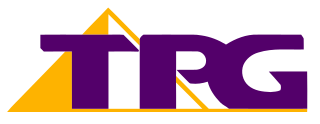
Telstra Group Limited is an Australian telecommunications company that builds and operates telecommunications networks and markets related products and services. It is a member of the S&P/ASX 20 and Australia's largest telecommunications company by market share.

Telecommunications in Australia refers to communication in Australia through electronic means, using devices such as telephone, television, radio or computer, and services such as the telephony and broadband networks. Telecommunications have always been important in Australia given the "tyranny of distance" with a dispersed population. Governments have driven telecommunication development and have a key role in its regulation.
Singtel Optus Pty Limited is an Australian telecommunications company headquartered in Macquarie Park, a suburb in the Northern Sydney region of Sydney, New South Wales, Australia. It is a wholly owned subsidiary of Singaporean telecommunications company Singtel.

Spark New Zealand Limited is a New Zealand telecommunications and digital services company providing fixed-line telephone services, mobile phone services, broadband, and digital technology services including cloud, security, digital transformation, and managed services. Its customers range from consumers to small - medium business, government agencies and large enterprise clients. It was formerly known as Telecom New Zealand until it was rebranded to Spark in 2014. It has operated as a publicly traded company since 1990. Spark's mobile network reaches 98% of New Zealand, with over 2.5 million mobile connections and 704,000 broadband connections

Vodafone Group Plc is a British multinational telecommunications company. Its registered office and global headquarters are in Newbury, Berkshire, England. It predominantly operates services in Asia, Africa, Europe, and Oceania.

iiNet Limited is an Australian internet service provider and telecommunications company that sells NBN plans, 4G and 5G Home Wireless Internet and services on its ULTRA Broadband Cable, FTTB and VDSL2 networks. It also sells mobile phone sim-only plans using the Vodafone network.

TPG is an Australian internet service provider that specialises in consumer and business internet services as well as mobile telephone services. As of August 2015, TPG is the second largest internet service provider in Australia and is the largest mobile virtual network operator. As such, it has over 671,000 ADSL2+ subscribers, 358,000 landline subscribers and 360,000 mobile subscribers, and owns the second largest ADSL2+ network in Australia, consisting of 391 ADSL2+ DSLAMs. It also operates in New Zealand.
AAPT is a fixed-line telecommunications company owned by TPG Telecom. It owns significant fibre and internet infrastructure in Australia. Its national network offers data, cloud, voice and internet services.
Crazy John's was a mobile phone retail chain in Australia started by Turkish Australian businessman John Ilhan. Crazy John's was the largest independent phone retailer in Australia, employing more than 400 people with more than 600 retail stores. Following his death in 2007, Ilhan's widow Patricia sold her stake in the company to Vodafone Australia, now a part of TPG Telecom. Originally a dealer of Telstra Mobile, Crazy John's became a Mobile Virtual Network Operator through the Vodafone Australia network, dealing directly with customers and offering its own competitive mobile phone deals and plans.

Terria Access Seekers Association, formerly known as G9, was a consortium of Australian Internet service providers that in 2006 formed a consortium to bid for the right to build the proposed National Broadband Network.
Internet in Australia first became available on a permanent basis to universities in Australia in May 1989, via AARNet. Pegasus Networks was Australia's first public Internet provider in June 1989. The first commercial dial-up Internet Service Provider (ISP) appeared in capital cities soon after, and by the mid-1990s almost the entire country had a range of choices of dial-up ISPs. Today, Internet access is available through a range of technologies, i.e. hybrid fibre coaxial cable, digital subscriber line (DSL), Integrated Services Digital Network (ISDN) and satellite Internet. In July 2009, the federal government, in partnership with the industrial sector, began rolling out a nationwide fibre-to-the-premises (FTTP) and improved fixed wireless and satellite access through the National Broadband Network. Subsequently, the roll out was downgraded to a Multi-Technology Mix on the promise of it being less expensive and with earlier completion. In October 2020, the federal government announced an upgrade by 2023 of NBN fibre-to-the-node (FTTN) services to FTTP for 2 million households, at a cost of A$3.5 billion.

Hutchison 3G Enterprises S.A.R.L., trading as 3 (Three) and Hutchison 3G, is the owner of several originally UMTS-based mobile phone networks and broadband Internet providers, which operate in Hong Kong, Macau, Austria, Denmark, Indonesia, Ireland, Italy, Sweden, and the United Kingdom.

The National Broadband Network (NBN) is an Australian national wholesale open-access data network. It includes wired and radio communication components rolled out and operated by NBN Co, a government-owned corporation. Internet service providers, known under NBN as retail service providers or RSPs, contract with NBN to access the data network and sell fixed Internet access to end users.
In telecommunications, 4G is the fourth generation of cell phone mobile communications standards. It is a successor to the third generation (3G) standards. A 4G system provides mobile "ultra-broadband" Internet access. Major Australian telecommunications companies, and most resellers that use one of these major telcos, have been rolling out and continuing to upgrade 4G since 2011/2012.
David Siang Hai Teoh is an Australian businessman. Until March 26, 2021, he was the executive chairman of TPG, a company he founded with his Taiwanese wife Vicky in 1992 after emigrating from Malaysia in 1986. He is also the founder and executive chairman of Tuas Limited, who owns Simba Telecom, a telecommunications company in Singapore.
Vodafone Australia is an Australian telecommunications brand providing mobile and fixed broadband services. Vodafone’s mobile network covers more than 23 million Australians, and Vodafone has commenced the rollout of its 5G mobile network. Vodafone NBN fixed broadband services are available in capital cities and selected regional centres. Vodafone is the third-largest wireless carrier in Australia, with 5.8 million subscribers as of 2020.

SIMBA Telecom Pte Ltd, formerly known as TPG Singapore, is a Singaporean telecommunications company and one of four major telecommunication company operating in the country.
The Mobile Black Spot Program is an ongoing Australian federal government funding program aimed at adding mobile phone reception to areas which do not have it, such as communities, transport routes and tourist destinations. As of October 2022, over 1,200 mobile base stations have been funded and a total of 1,047 constructed by Telstra, Optus, TPG Telecom, and Field Solutions Group (FSG). The need for a mobile black spot funding program was first identified in the government's 2011-12 Regional Telecommunications Review, with the first of the towers built under the program being switched on in December 2015. Mobile base stations built under the program are funded with contributions from the Commonwealth, the network operators themselves, and in some cases, state and local governments.










